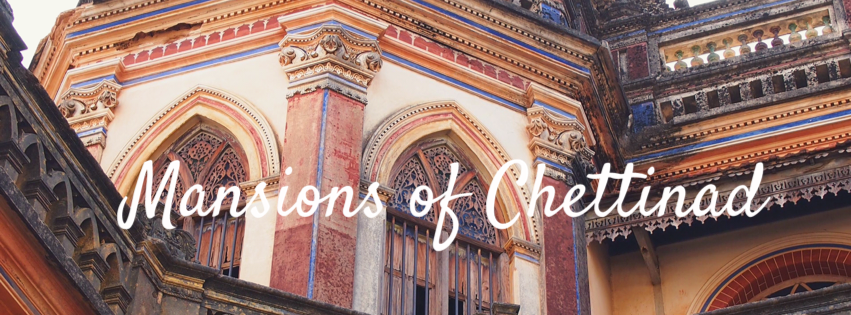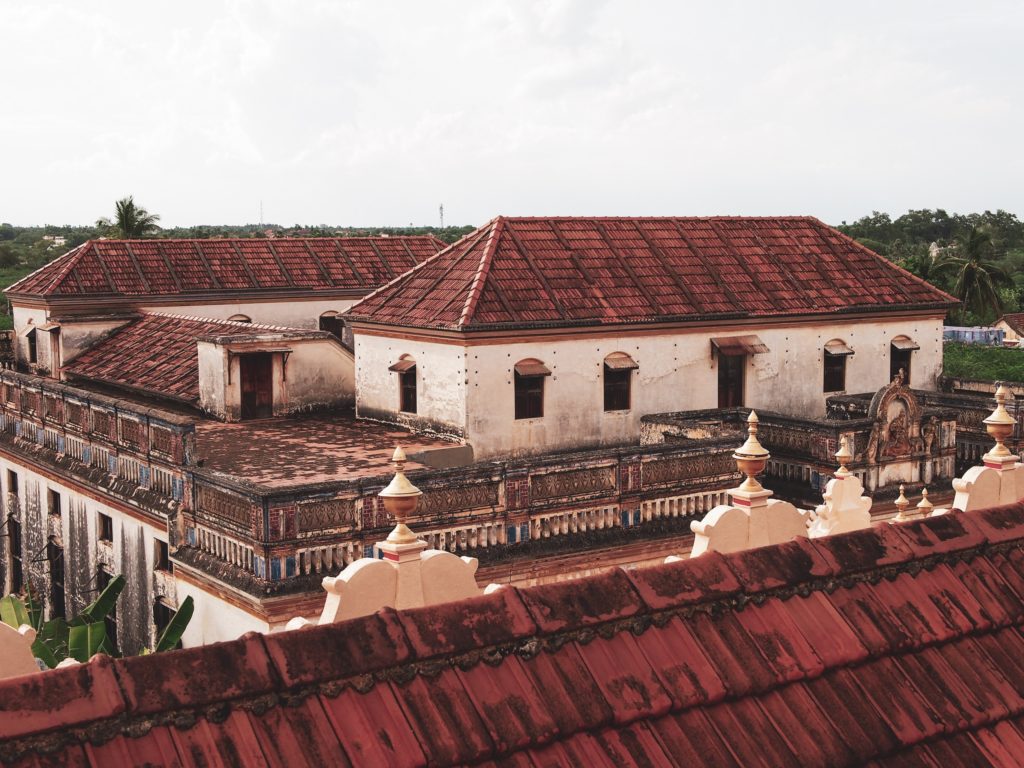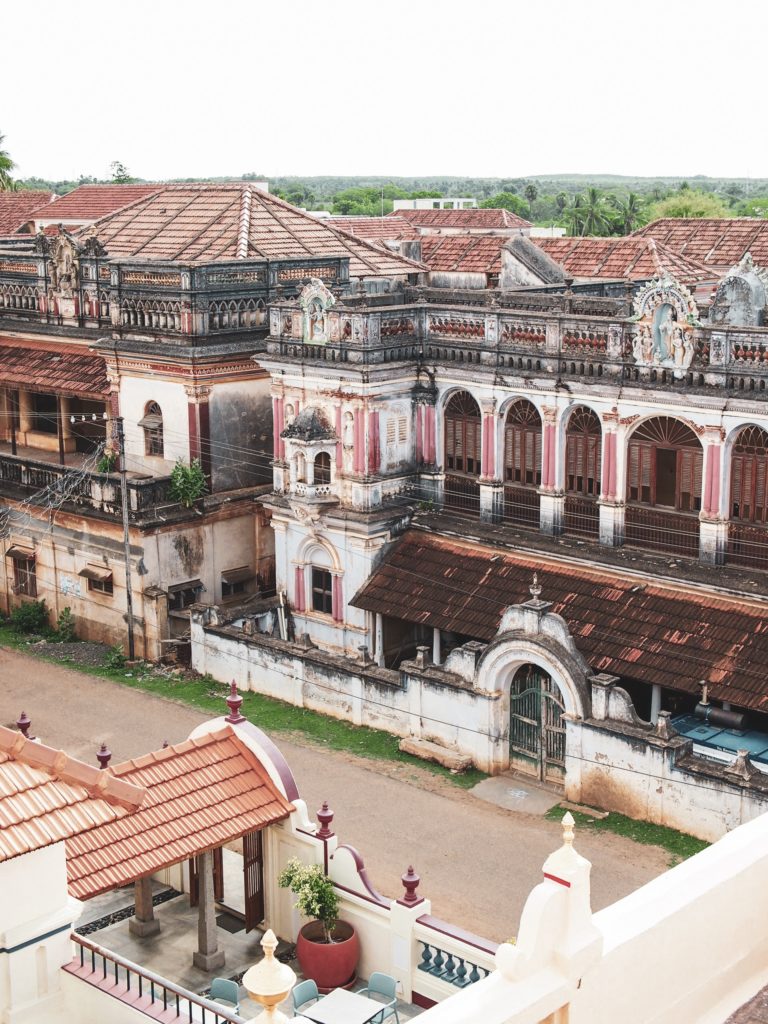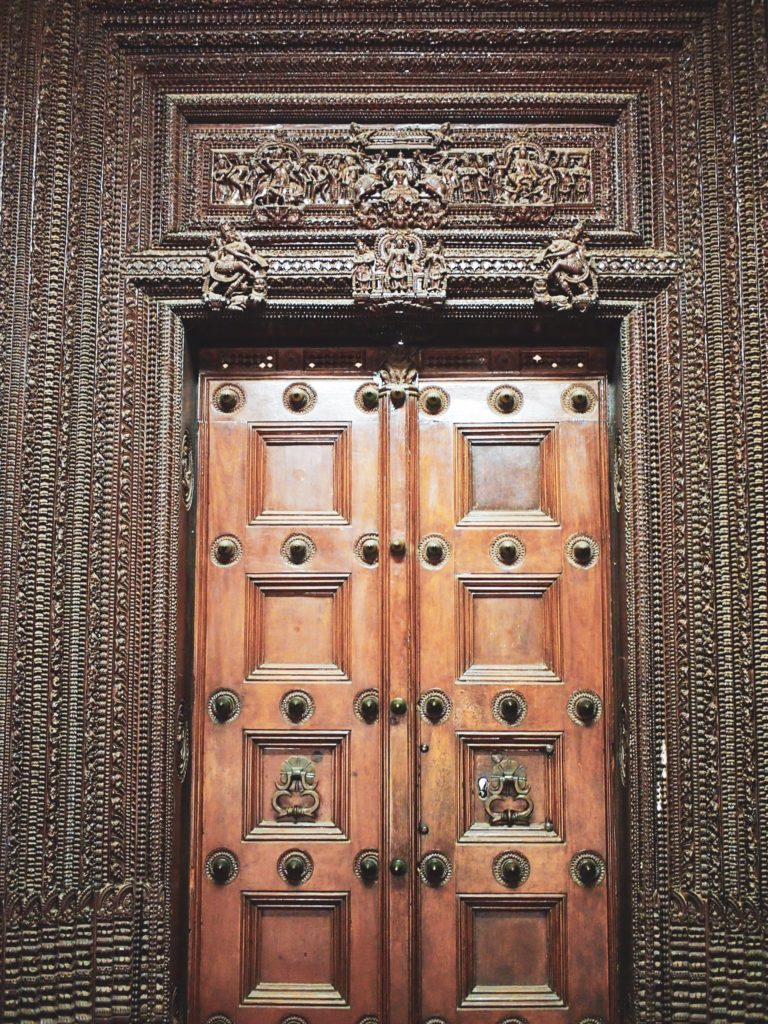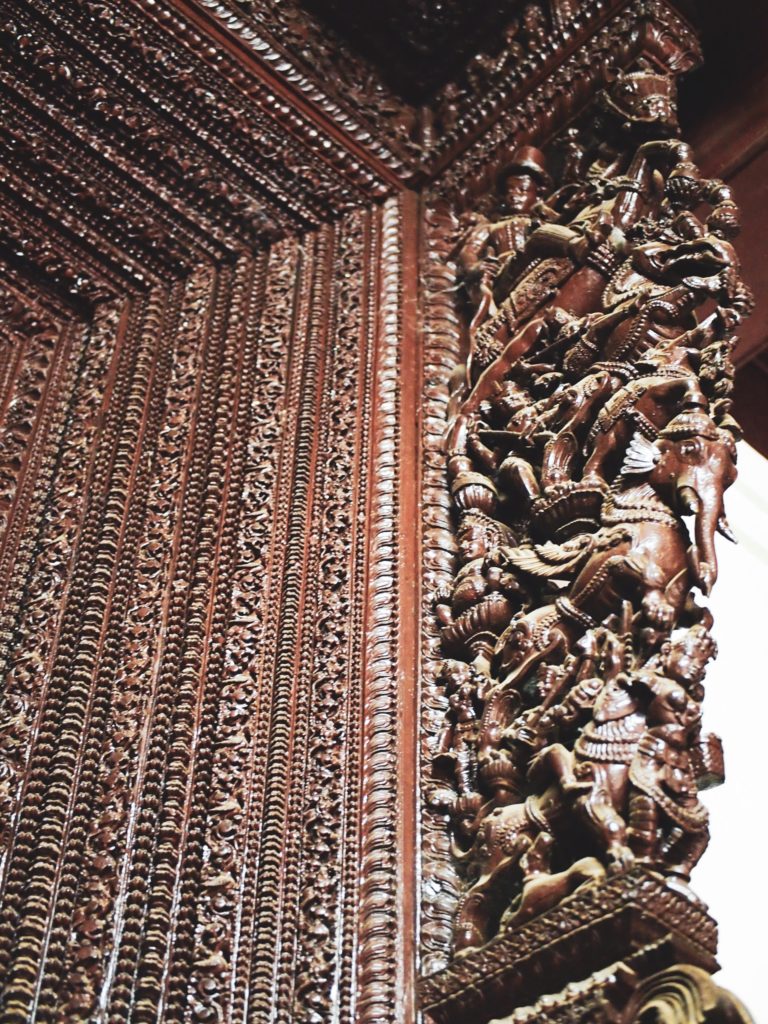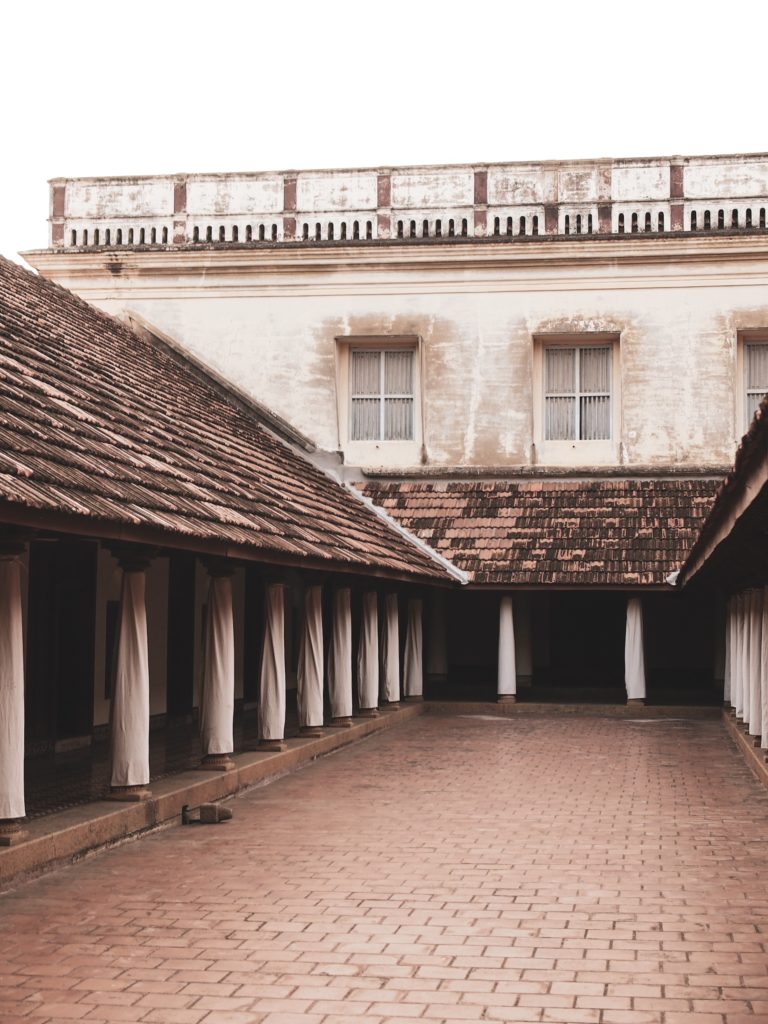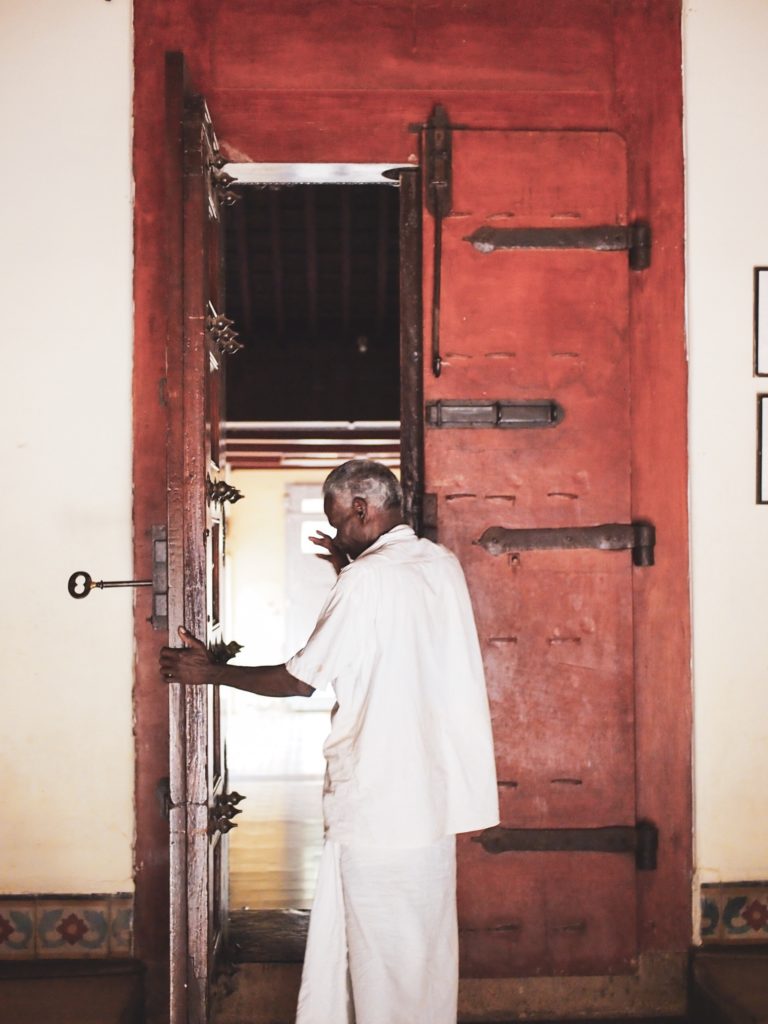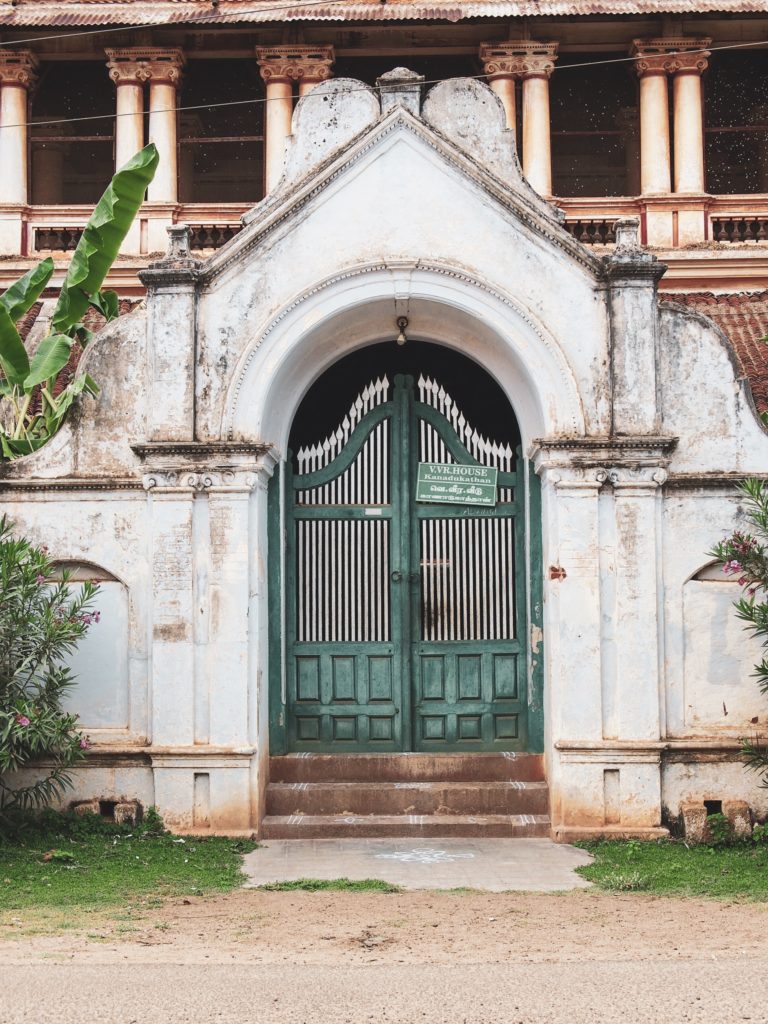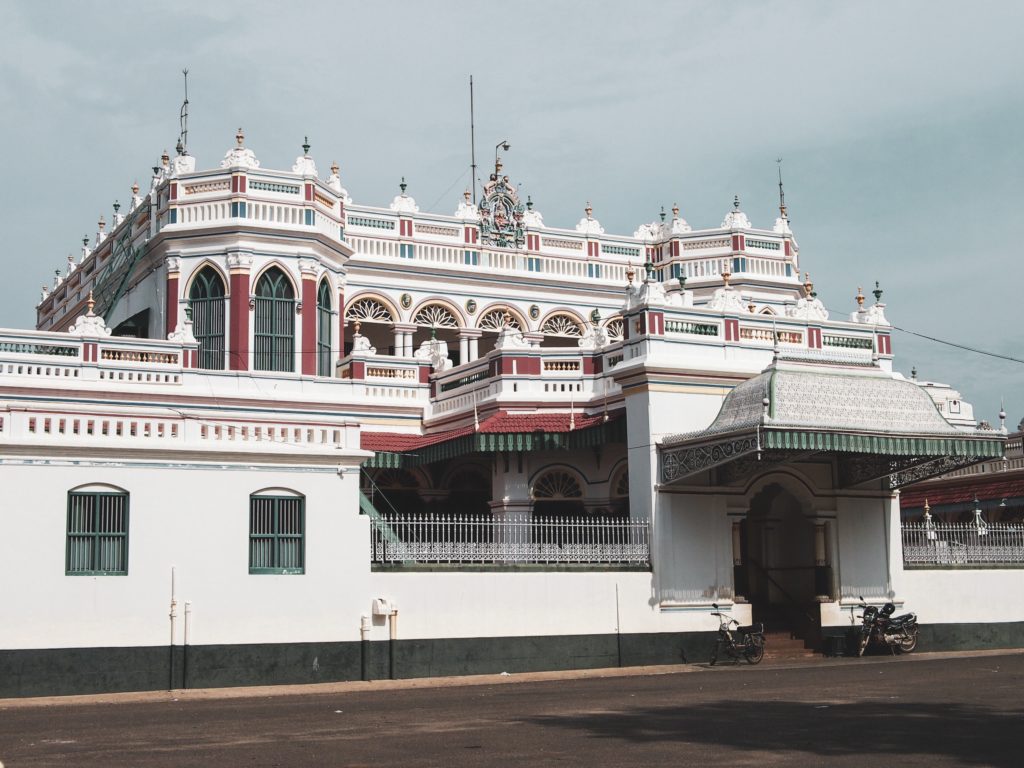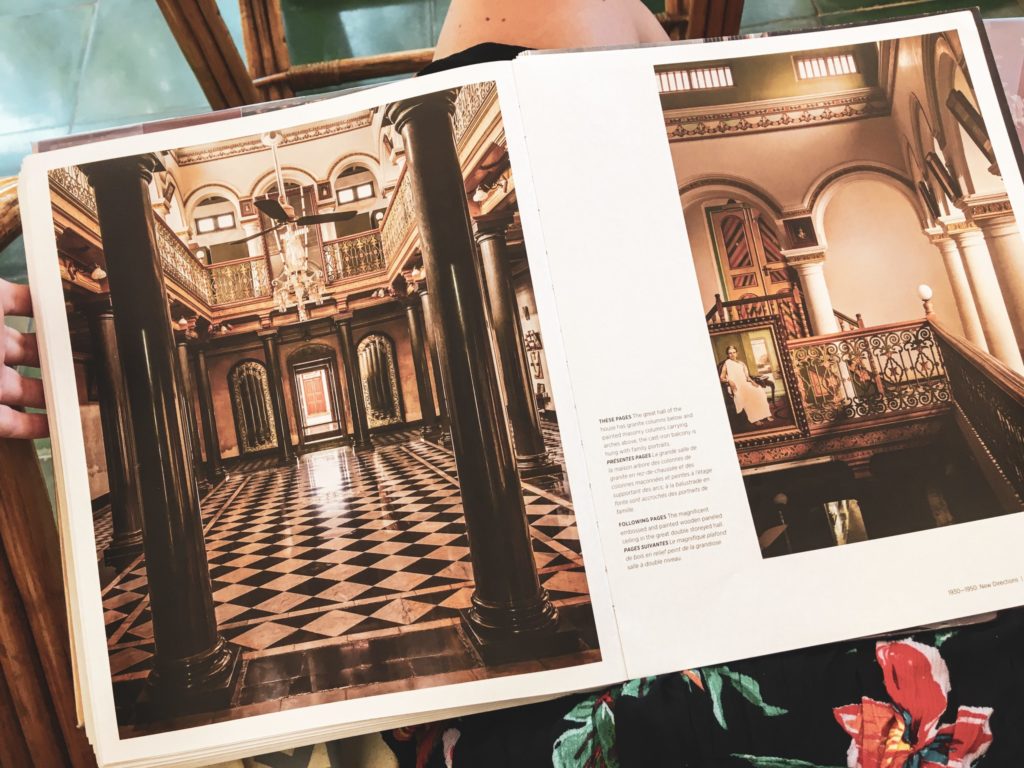The Chettiar settled in the middle of the 19th century during the British colonial period and built imposing palatial homes in the Southern part of Tamil Nadu.
According to the legend, they were originally from the coastal village of Poombukar. After a devastating tsunami, the community started looking for a dry area, so they settled in Chettinad.

Houses set back with steps (picture below) show their fear of having another tsunami. From the middle of the 19th century, the sense of commerce of the Chettiars’ had led to a prosperious period during which they contributed to the development of Chettinad.
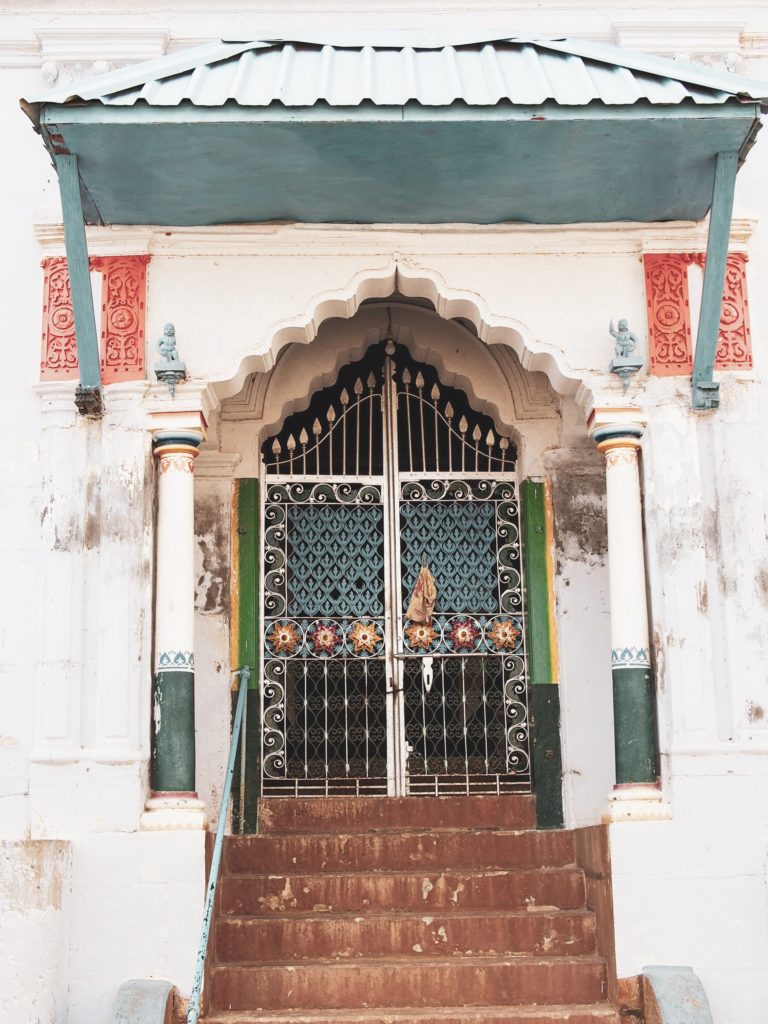
Since Chettiars’ main occupation was trading, they travelled all around the world.
The houses were built according to the rules of vastu shastra, the traditional Indian science of architecture (same design, layout, measurements, ground preparation, space arrangement, and spatial geometry).
Inner courtyards and halls align one another, giving a perspective view through the house from one end to the other.
At the entrance, the veranda is always adorned with dark marble columns and the large reception hall crowned by a carved wooden frame. In the central courtyard, the carved pillars recall the Dravidian temples.
Pavilions, halls and courtyards were added for business purposes and as areas for receptions and weddings, making these traditional houses real palatial homes.
These different architectural influences reflect the way of life of the Chettiars, who knew how to combine their vibrant traditions with influences from the global economy.
In order to build these palaces, materials and expertise were brought from all over the world which only added to the cultural glory of Chettinad: teak of Burma, ceramics of Japan or Europe, Italian or Belgium marble, large crystal chandeliers of Val Saint-Lambert and mirrors of Belgium. A mixture of Tamil and Western architecture that makes them unique houses in India.
Today, Chettinad has fallen into obscurity, and few have been interested in investing to restore the past splendour of these homes. Some homes are still well maintained, others rather decrepit, but all have a charm. While their owners have almost all left Chettinad for the big cities (migration to villages much closer to the faster developing villages), few are willing to sell their family homes. One of many reasons being; problems between families. Mansions, accomodating around 60 people aren’t easy to sell when 60 people have to come up with a decision. Therefore, most of them are in a state of neglect; only about a dozen can be visited; some have been converted into bijou hotels; some prefer to rent them for film shoots or to organize big wedding parties.
A legacy to preserve!
We can see in Chettinad a glance of its prosper period, through the houses. They contain precious jewels and crafts from all around the world.

handmade & painted tiles with traditional patterns 
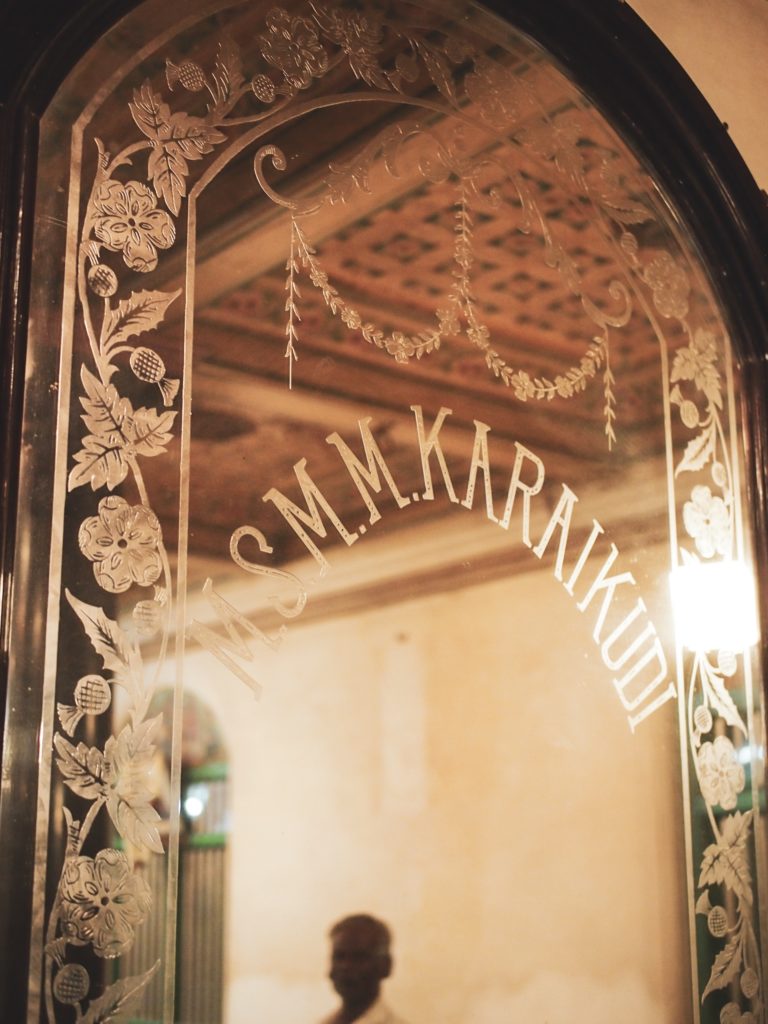
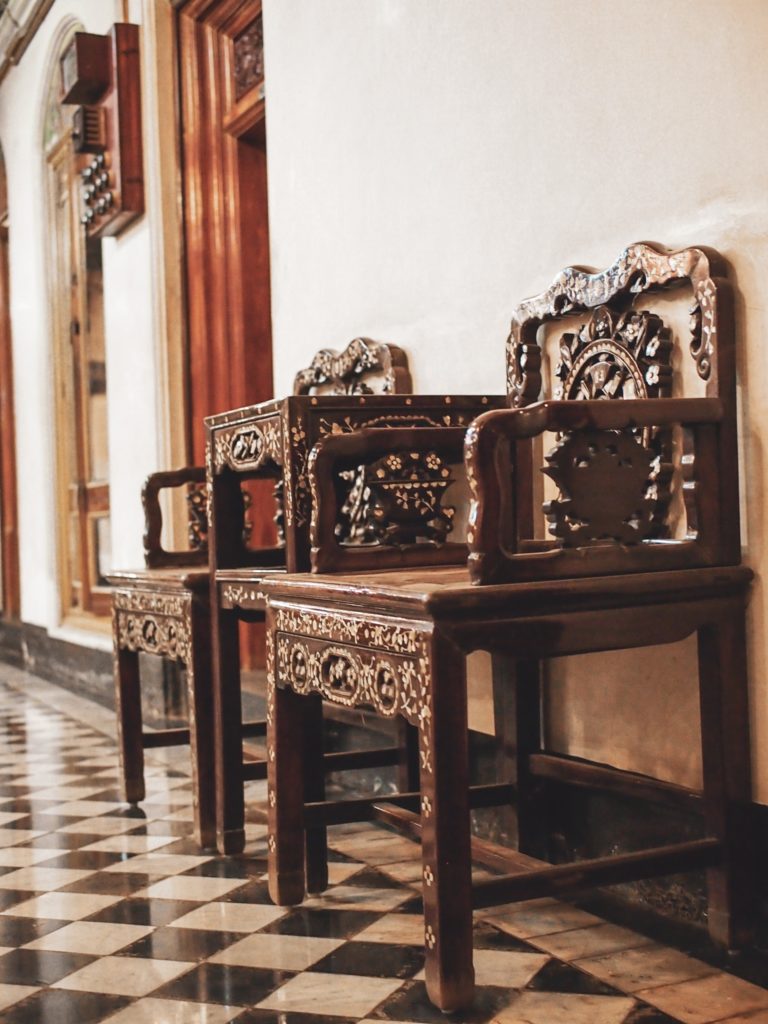

crystal chandeliers of Val Saint-Lambert
Author – Bharath Ramamurtham

